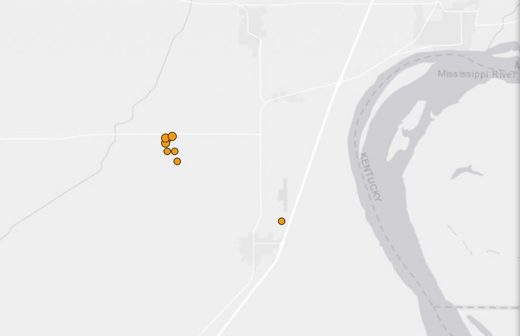
Earthquake hazards from the NMFZ pose a significant risk to much of the US. Regionally, a large earthquake will affect people, property, infrastructure, and market and supply sectors. However, the importance of the region as a transportation and distribution center means that a large earthquake would have serious ripple effects far beyond the area of shaking. SOURCE
Lilbourn, Missouri is currently hit by a swarm of earthquakes
Dawson White
The Olympian
Mon, 30 Sep 2019 19:28 UTC

© USGS
Lilbourn, Missouri is currently hit by a swarm of earthquakesAn area of southeast Missouri experienced five earthquakes in less than hour Monday morning, experts say.
It started with a 2.6 magnitude temblor around 11:18 a.m. near Lilbourn, a small city just north of Missouri’s boot heel, according to the United States Geological Survey. A mere three minutes later, a 1.1 magnitude quake rumbled nearby.
Just before 11:30 a.m., a 2.7 magnitude quake rattled southwest of Lilbourn followed by a 1.8 magnitude quake only five minutes later, the USGS says.
It would be 23 minutes before the next quake, another magnitude 2.7, shook an area just west of Lilbourn, the USGS says.
All five quakes happened within a 40-minute window.
The area near Lilbourn is part of the New Madrid Seismic Zone, according to the Missouri Department of Natural Resources. Quakes along the fault line have been felt across the south and Midwest in Alabama, Arkansas, Illinois, Indiana, Kentucky, Mississippi, Missouri and Tennessee, the department says.
Experts say the zone is responsible for what are believed to be North America’s most intense earthquakes — ranging in magnitude from 7.0 to 8.0 — which caused the Mississippi River to run backwards in the early 1800s, the department says.








